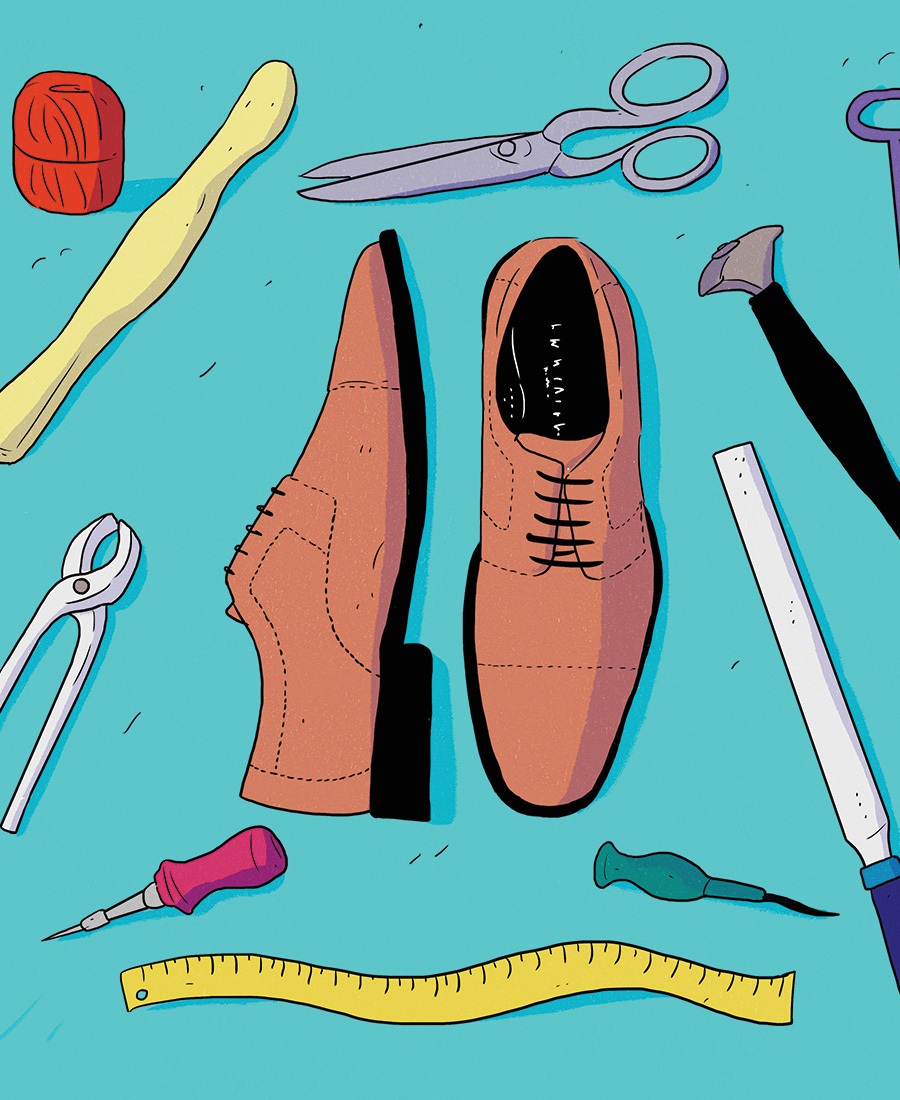Clothing Repair Shops Are In — but They Actually Were Never Out
Suddenly, getting things repaired is all the rage in Philly. This comes as no surprise to my cobbler.

Illustration by Laura Breiling
This spring, around my fifth wedding anniversary, I started wearing my wedding shoes to work. A pair of sleek walnut brogues, they once felt too dressy for everyday use. Then, one day, they didn’t. At first I wore them tentatively — a replacement for a disintegrating pair of cheap Chelsea boots. But before long, I was wearing my wing tips everywhere. To work. To the grocery store. To the bar. What I’d once dismissed as dad shoes — the kind my father used to shine with care — had become my go-to footwear.
Not coincidentally, I’m now a dad myself. I pop the shoes on before plunking my daughter into her backpack contraption and setting off for preschool. I soon discovered, however, that tramping from South Philly to Washington Square is hell on your soles. For reasons both sentimental and economic, simply replacing my shoes wasn’t an option. I needed — and it feels so anachronistic to say it — a cobbler.
I’ve had shoes fixed before, but there was something about my visit to Benjamin’s on the Row — a shop so quaint that its address is 138 and a half — that felt particularly timely. At a moment when major brands like Patagonia are instituting repair policies, and Madewell is recycling old denim, and repair cafes (look it up) are springing up across the country, ducking into Benjamin’s felt like stumbling onto the city’s coolest secret.
Getting things fixed may be hot, but at Benjamin’s and idiosyncratic repair shops like it, it’s always been in style. No sooner did Aimee, part of Benjamin’s two-cobbler crew, have my kicks in hand than she started deconstructing my relationship with my shoes, and with the world. She deduced that I rode these shoes hard (the soles had worn like sneakers) but that I cared about them (the uppers were pristine), and that I was a weather watcher (no rain damage). It felt like a parlor game in a way — “You see patterns,” Aimee says of her people-reading skill, “you learn to put everything together at once.” But in an era when customer service is handled more and more by chatbots, this sort of personal attention can seem like a revelation.
Maybe you don’t appreciate the value of a really good pair of shoes until you’re older — until you can afford a really good pair. Or maybe there’s a gut-level reaction taking place in our society to an economy that’s built around disposability but never accounts for where broken stuff ends up.
In writing this piece, I discovered that one friend is wearing the same oft-repaired Doc Martens she wore in college — in the ’90s. Others take handbags to their tailor, have amps tuned up, get vacuum cleaners and mixers and grills fixed. There may even be a cult of personality growing around repair people. A friend in the ’burbs reports a “hot cobbler” — a tasty dish who knows his way around a heel and gets tongues wagging. And me? I’ve become obsessed with my shoe person; she is, after all, going to keep me in my favorite pair for the next few decades.
Published as “The Fix Is In” in the August 2018 issue of Philadelphia magazine.


